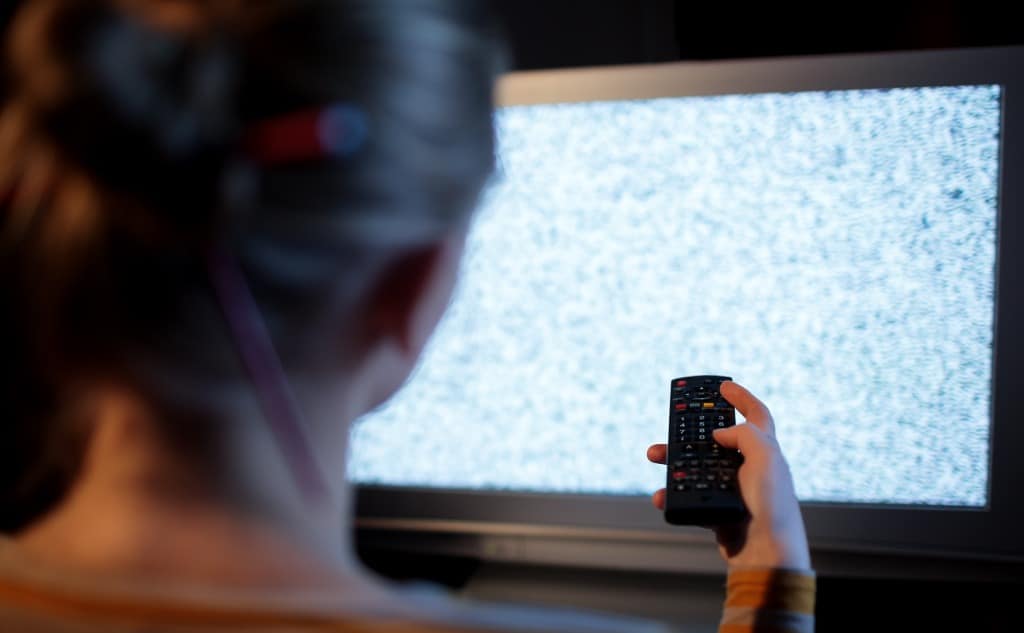This is how you can watch live the birth of our universe on TV—the so-called Big Bang.
Television and radio antennae are sensitive to the Big Bang’s microwave frequency.
So if you want to witness live the birth of our universe and all the details about it, then you’re in the right place.
Let’s get started!
The Big Bang on TV
The Big Bang is, flat-out, the single greatest mystery to human beings. It is the missing key to understanding how life began and also how life may end.
But, no matter how mysterious, did you know that you can simply watch our universe’suniverse’s creation from your home through Big Bang TV static?
Well, maybe you can’tcan’t actually watch it happen. But, you can observe real evidence from the Big Bang through TV static.
You know those random black and white specs you hear and see when you are in between channels, or your antenna is broken?
These are radiation waves.
And a small percentage of these waves is the afterglow of the universe’suniverse’s biggest mystery, the Big Bang.
To understand more about where these waves come from, let’slet’s do a VERY general overview of the Big Bang. Flashback to 13.77 billion years ago.
Just after the Big Bang, the universe was an extremely hot and opaque plasma of protons, electrons, and photons.
Typically, these components would combine to form simple atoms, like hydrogen. But, at this time, the universe was so hot that such combinations were not possible.
In fact, photons could not even pass through this dense plasma, rendering them unable to move freely.
Now, 378,000 years later, the hot, thick electron-proton stew cooled enough to allow the matter to combine, forming hydrogen elements.
At this point, the universe was no longer opaque but completely transparent, and photons could now freely travel through space. This is the first light in our universe called the Cosmic Microwave Background radiation (CMB).
Ever since that era, this light has been traveling through space. It has traveled for billions of years and sextillions of miles to reach our telescopes on Earth.
The light has become stretched out over these unimaginable distances as the universe has expanded, leaving them in the microwave spectrum.
Seeing the Big Bang TV Static
Fortunately, some of our television and radio antennae are sensitive to this microwave frequency.
So, when you are flipping through channels, or when your cable is down, you witness the Big Bang.
Most of this static is caused by things like our Sun, other electronics, and lighting. But, a small portion (around 1%) is, in fact, the afterglow of our universe’suniverse’s creation.
The Internet will lead you across an array of different percentages and debates on the truth of this TV static theory. But, even reputable organizations, like CERN, acknowledge that this is a valid theory.
Ultimately, when our televisions switched from analog to digital in 2013, the universe’suniverse’s magical static was canceled. These modernized electronics now receive different frequencies that are not residuals of the Big Bang.
So, if you have an “”old school”” television sitting covered in dust in a crawlspace, it could be worth pulling out.
Turn off the Kardashians, and tune in to the beginning of everything we know.
After all, what could be more entertaining than our universe being born?
How the Cosmic Microwave Background Radiation Formed
Just after the Big Bang, the universe was an extremely hot and opaque plasma of protons, electrons, and photons.
Typically, these components would combine to form simple atoms, like hydrogen.
But, at this time, the universe was so hot that such combinations were not possible.
In fact, photons could not even pass through this dense plasma, rendering them unable to move freely.
